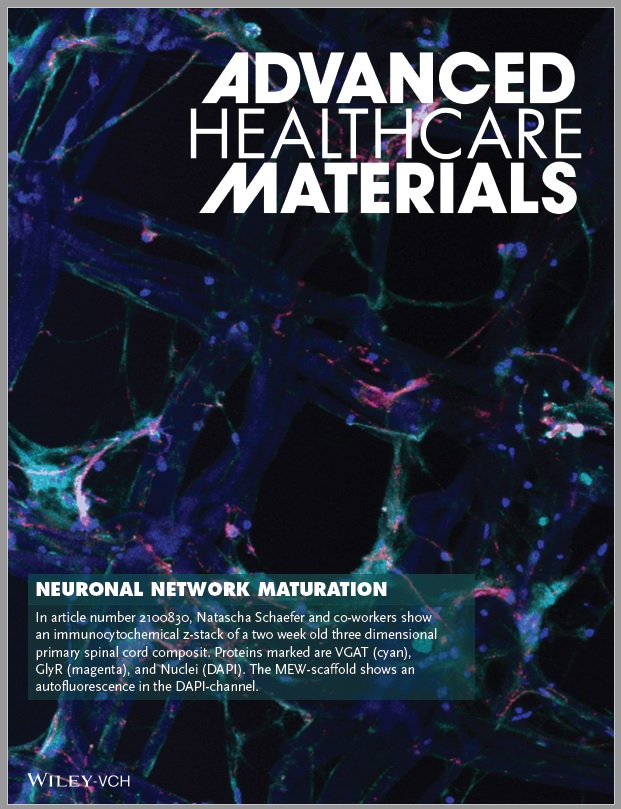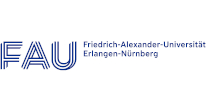
Titelbild in Advanced Healthcare Materials für Natascha Schäfer:
REIFUNG NEURONALER NETZE
In Artikel 2100830 zeigen Natascha Schaefer und Mitarbeiter einen immunzytochemischen Z-Stapel eines zwei Wochen alten dreidimensionalen primären Rückenmarkskompositums. Die markierten Proteine sind VGAT (cyan), GlyR (magenta), und Zellkerne (DAPI). Das MEW-Gerüst zeigt eine Autofluoreszenz im DAPI-Kanal.
Abstract
3D cell cultures allow a better mimicry of the biological and mechanical environment of cells in vivo compared to 2D cultures. However, 3D cell cultures have been challenging for ultrasoft tissues such as the brain. The present study uses a microfiber reinforcement approach combining mouse primary spinal cord neurons in Matrigel with melt electrowritten (MEW) frames. Within these 3D constructs, neuronal network development is followed for 21 days in vitro. To evaluate neuronal development in 3D constructs, the maturation of inhibitory glycinergic synapses is analyzed using protein expression, the complex mechanical properties by assessing nonlinearity, conditioning, and stress relaxation, and calcium imaging as readouts. Following adaptation to the 3D matrix-frame, mature inhibitory synapse formation is faster than in 2D demonstrated by a steep increase in glycine receptor expression between days 3 and 10. The 3D expression pattern of marker proteins at the inhibitory synapse and the mechanical properties resemble the situation in native spinal cord tissue. Moreover, 3D spinal cord neuronal networks exhibit intensive neuronal activity after 14 days in culture. The spinal cord cell culture model using ultrasoft matrix reinforced by MEW fibers provides a promising tool to study and understand biomechanical mechanisms in health and disease.





